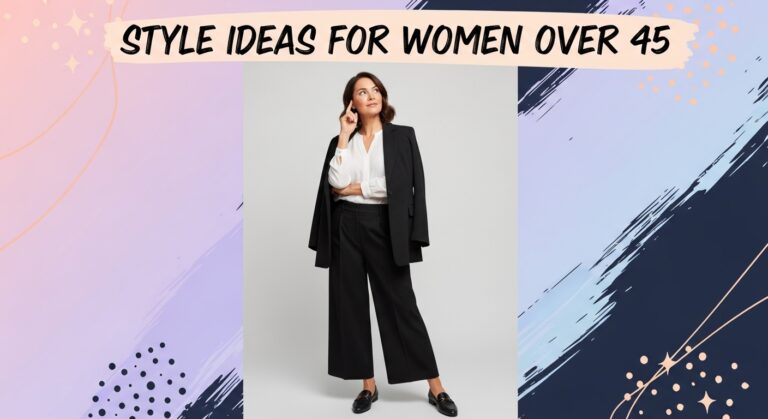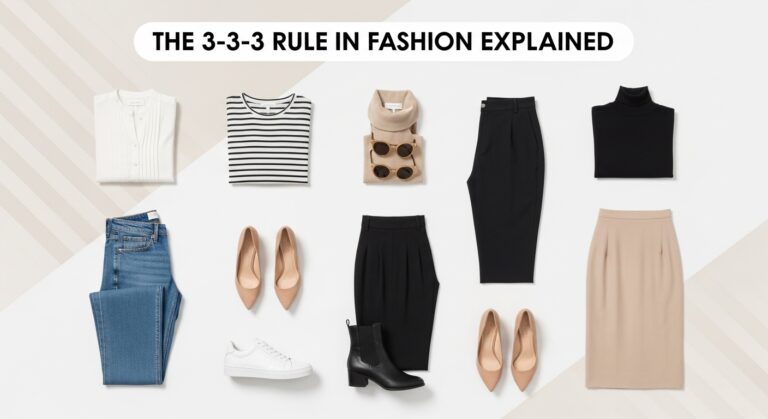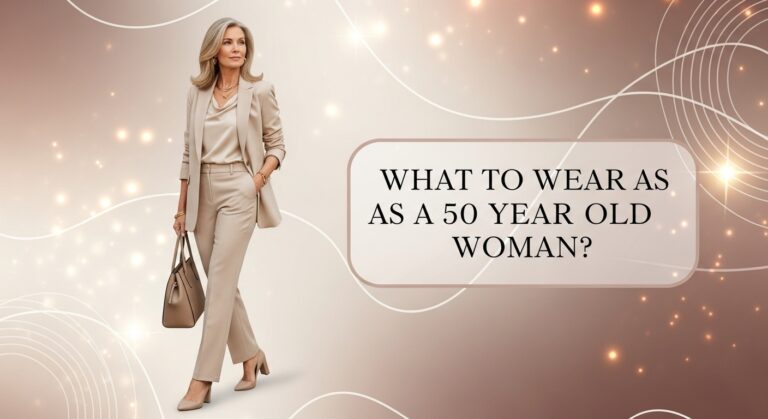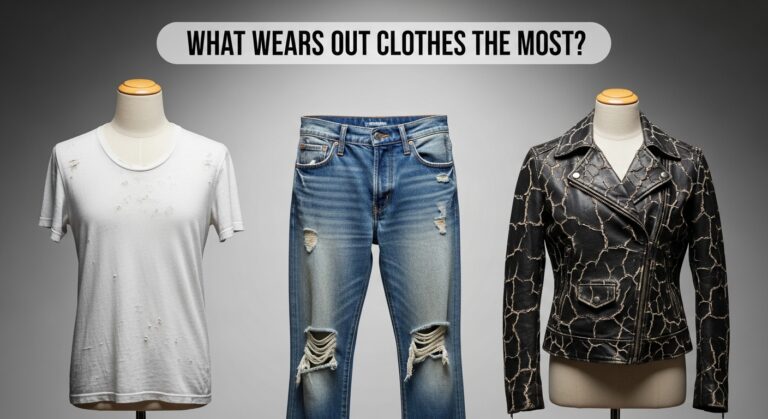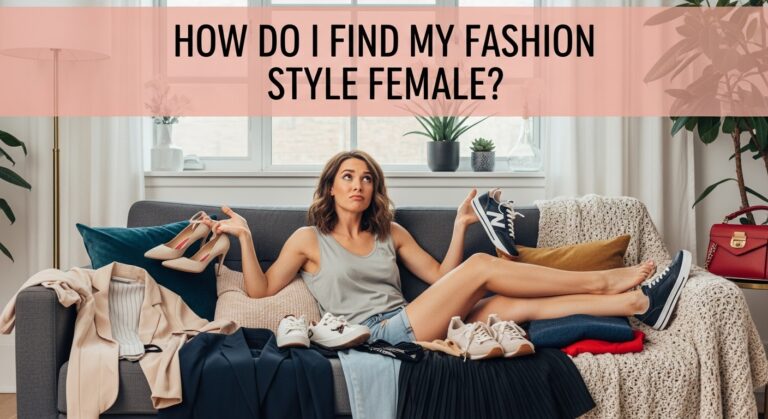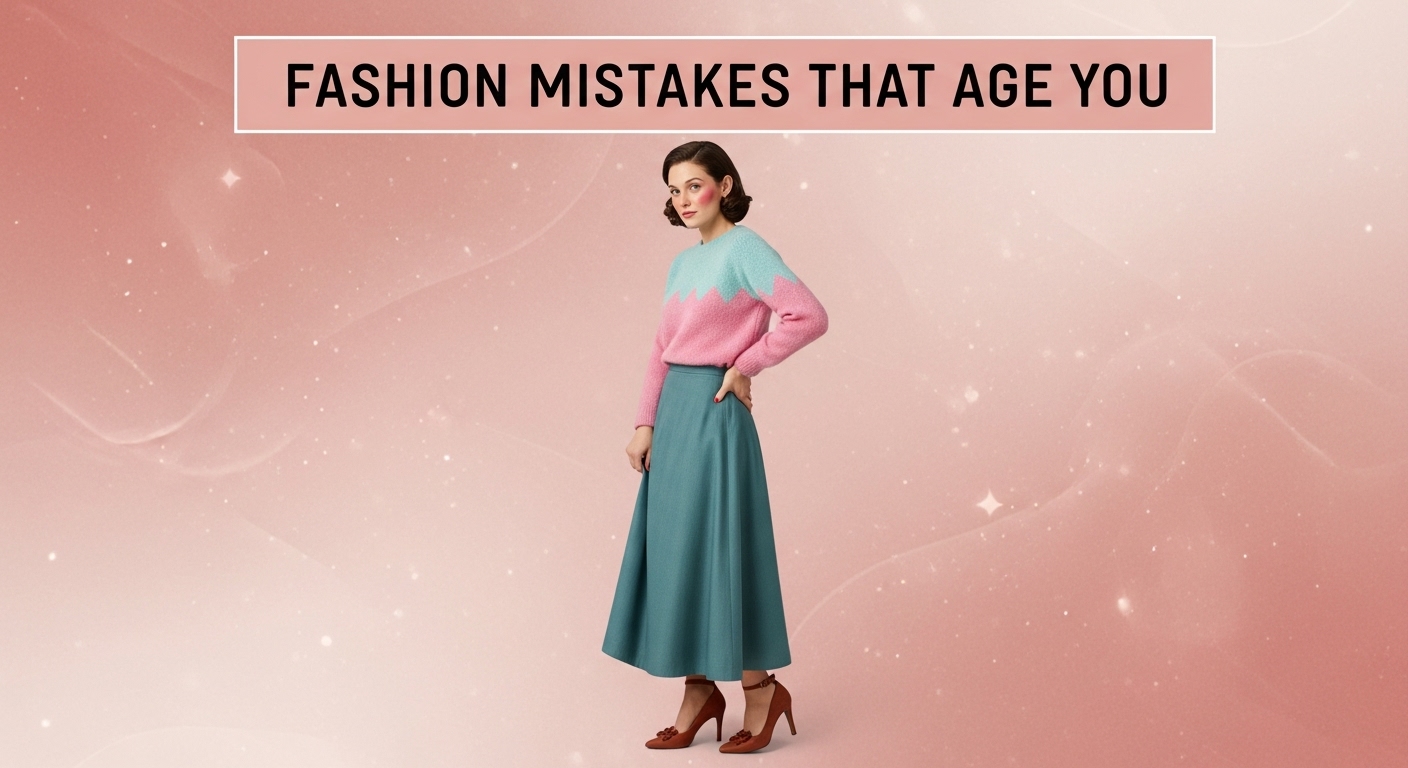
We often think of fashion as a way to look polished, elegant, and even younger. But sometimes, the very choices we make with clothing, makeup, or accessories can add years instead of subtracting them. It’s not always about wrinkles or gray hair—style plays just as big of a role in how old or youthful you appear.
The truth is, certain habits like wearing outdated cuts, heavy fabrics, or even the wrong shoe style can make you look older than you are. Small details add up, and most of the time, people don’t realize they’re guilty of them until someone points it out.
So, what exactly should you avoid? In this article, we’ll uncover the most common fashion mistakes that tend to age women faster, along with tips on how to fix them effortlessly. A few tweaks in your wardrobe might be all you need to refresh your look and bring back a youthful spark.
Why does clothing sometimes make you look older instead of younger?
Clothing influences how others perceive your energy, confidence, and even your age. When pieces feel outdated, too stiff, or ill-fitted, they send signals that create an older appearance rather than a fresh, lively one.
Psychologists explain that our brains are wired to associate certain silhouettes, patterns, and colors with a particular era. If your outfit looks like it belongs to another decade, people subconsciously place you in that age group. Similarly, dark, heavy, or shapeless clothing can drain vibrancy from your appearance, while lighter tones and well-tailored cuts suggest youthfulness.
This is why two people of the same age can appear years apart simply based on what they’re wearing. Your wardrobe can either highlight vitality or unintentionally add extra years.
Is wearing outdated trends one of the biggest aging mistakes?
Yes, holding onto outdated trends is one of the fastest ways to look older than your age. When styles evolve, keeping clothes that were trendy decades ago often creates a visual timestamp on your look.
For example, bootcut jeans with low rises, shoulder-padded blazers from the 80s, or heavy floral prints can make your outfit feel stuck in time. A study on fashion perception found that people who wore modern cuts were judged as more confident and youthful compared to those in older styles—even if they were the same age.
This doesn’t mean you need to chase every passing trend. The secret is to balance timeless pieces with small modern updates. Swapping outdated jeans for a straight or wide-leg style, or refreshing an old jacket with a current cut, can instantly lift your entire outfit without losing your personal touch.
Do oversized and shapeless clothes add years to your appearance?
Absolutely, oversized and shapeless clothing often creates an older look by hiding your natural figure. While comfort is important, clothes that lack structure can overwhelm the body, making you appear heavier and less energetic.
Loose cardigans, tent dresses, or boxy tops can remove definition from your waist and shoulders, which are features that help signal youthfulness. Researchers in fashion psychology point out that clothes which enhance body proportions tend to make people appear younger, regardless of their actual age.
Instead, opt for tailored pieces that skim the body without clinging too tightly. A well-fitted blazer, a dress with a defined waist, or trousers with clean lines can give you a polished yet relaxed appearance. The key is balance: flowy fabrics can look youthful if paired with something structured.
Can the wrong shoe style make you look older?
Yes, shoes have a huge influence on how youthful or dated you look. Footwear often sets the tone for the whole outfit, and certain choices can instantly age you.
Chunky orthopedic-style shoes, overly sensible flats, or very outdated heels can send the wrong message. They may be comfortable, but they also create an impression of maturity rather than vitality. On the other hand, sky-high stilettos can feel try-hard, which can also backfire.
Stylists suggest choosing shoes that combine comfort with style. For example, sleek loafers, ankle boots with a low block heel, or trendy sneakers can keep your look fresh without sacrificing practicality. Even small updates, like swapping thick soles for modern streamlined ones, can take years off your overall style.
Does sticking to dark colors make you appear older?
Yes, wearing exclusively dark shades such as black, navy, or brown can add years to your look by muting your natural glow. While dark colors are slimming and elegant, they can also drain warmth from your complexion.
Studies on color psychology show that lighter tones like pastels, jewel tones, or soft neutrals reflect light and enhance skin brightness, which helps you appear younger and more vibrant. In contrast, darker shades can cast shadows on fine lines or wrinkles, making them more noticeable.
If you love dark clothing, balance it with pops of lighter shades. A white blouse under a black blazer, a pastel scarf, or even bold accessories can lift your outfit. This small adjustment creates contrast, which instantly refreshes your appearance.
Do heavy fabrics and bulky layers add age to your style?
Yes, heavy fabrics like thick tweeds, stiff wool, or bulky knits can make you appear older by creating weight and rigidity. These materials often hang awkwardly and emphasize the body in unflattering ways.
Fashion experts explain that heavy layering can make outfits look dated, especially when paired with old-fashioned cuts. Younger styles usually highlight movement and flow, which lighter fabrics naturally achieve.
Switching to fabrics like soft cotton, silk blends, or lightweight knits can transform how youthful your outfit feels. They add fluidity, which not only flatters but also projects a sense of energy and ease.
How do ill-fitting clothes add years to your look?
Ill-fitting clothes—whether too tight or too loose—tend to highlight age in subtle ways. Tight clothes emphasize areas like the waist, arms, or hips that naturally change shape over time. Meanwhile, oversized fits can swallow your frame and make you appear less dynamic.
Research in consumer fashion behavior shows that well-fitted clothing increases perceived confidence and attractiveness, regardless of age. When garments follow your natural lines, they project vitality rather than stiffness.
Investing in tailoring is one of the easiest ways to fix this mistake. A simple alteration to shorten sleeves, adjust waistlines, or hem trousers can instantly make an outfit look custom and youthful.
Do outdated accessories make you appear older?
Yes, accessories play a larger role than most realize. Outdated handbags, jewelry, or belts can age you even if the rest of your outfit is current.
A chunky beaded necklace from years ago or an overly practical handbag can suggest an older style. Fashion observers often describe accessories as “the final clue” in determining whether someone looks modern or dated.
Refreshing your accessories doesn’t mean discarding everything. Replacing just a few items with modern updates—a sleek crossbody bag, minimalist earrings, or a contemporary belt—can give your entire outfit a younger feel without major effort.
Is heavy makeup or the wrong hairstyle part of fashion mistakes?
Yes, beauty choices directly affect how youthful or aged your style appears. Heavy makeup can settle into fine lines, while outdated hairstyles instantly reveal the era you’ve been stuck in.
Studies in personal perception show that lighter, dewy makeup makes people appear younger compared to heavy, matte finishes. Similarly, hairstyles with volume, softness, and movement signal youthfulness, while rigid styles with too much hairspray tend to age the face.
Pairing fashion updates with modern beauty adjustments completes the look. Even a subtle change, like softening eyeliner or updating your haircut, works alongside clothing to create a fresher appearance.
Can wearing only “safe” clothes make you look older?
Yes, always sticking to safe, neutral, or predictable clothing can unintentionally age you. While classic staples are valuable, an overly cautious wardrobe can appear dull and lifeless.
Stylists often say that youthfulness comes from experimenting with small risks—whether that’s a bold print, a trendy cut, or a statement accessory. People who introduce variety into their style often appear more vibrant, even when they’re older.
Adding one modern or playful element to your outfit, like patterned shoes or a stylish jacket, shows that you’re confident and in touch with current trends. It doesn’t mean abandoning classics—it just means avoiding the trap of looking too safe.
Why do details like posture and clothing care matter?
Because even the best outfit looks aged when paired with poor posture or neglected clothing care. Wrinkled shirts, scuffed shoes, or faded colors create an impression of tiredness, which people associate with aging.
Similarly, posture communicates energy. Research in body language shows that standing upright with open shoulders makes people appear younger and more confident compared to slouching.
Taking care of your clothes—regular steaming, proper storage, and occasional refreshes—ensures they keep projecting youthfulness. It’s not just about what you wear, but also how you present it.
How small changes can keep your style youthful
The fashion mistakes that age you are often subtle—outdated cuts, shapeless clothing, heavy fabrics, or worn accessories. None of these are about hiding your age; they’re about presenting the most vibrant version of yourself.
When you update your wardrobe with a few modern touches, choose colors that brighten, and invest in fit, you immediately project energy. Style is never about dressing young—it’s about dressing fresh. And when you do that, your confidence becomes the most youthful accessory of all.


